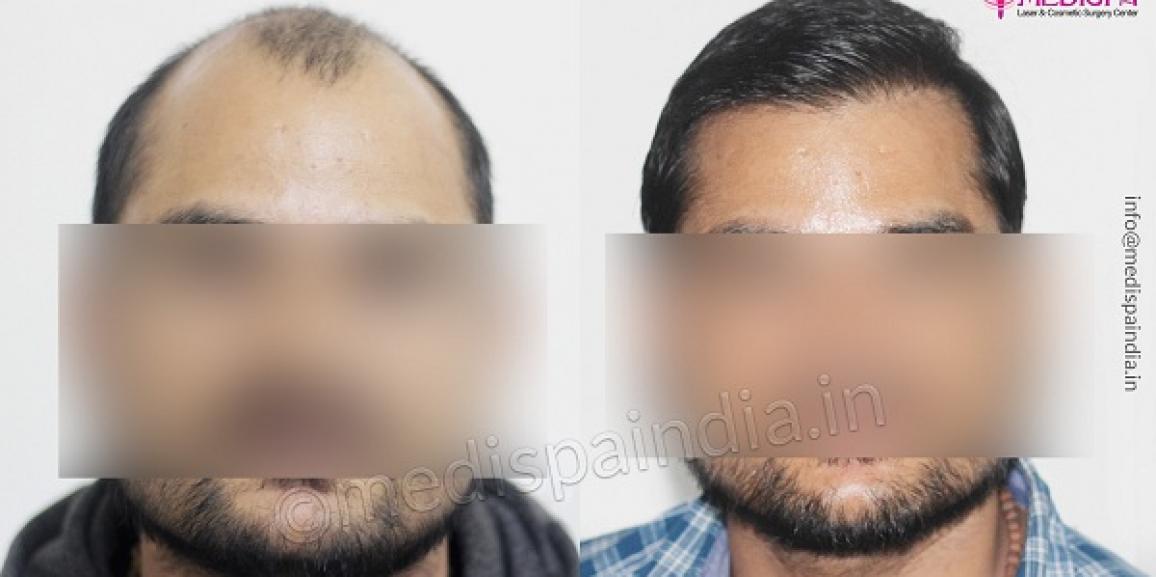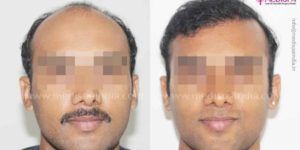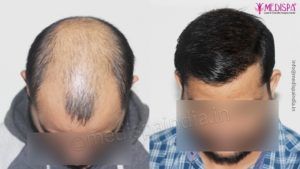
An autoimmune disease called alopecia areata occurs when the immune system misidentifies healthy cells as foreign substances. When a person has alopecia areata, their own immune system assaults the hair follicles, causing them to shrink and eventually cease growing hair. This results in hair loss.
It frequently manifests as inconspicuous little patches of hair loss that become obvious when they join together to form a prominent area. On top of the scalp, other regions of the body, including the eyebrows, eyelashes, and face, may also experience sudden hair loss. It may sometimes take time to mature and come back years later.
The market of hair transplant in India has grown significantly over the past few years and continues to expand. The main cause of the procedure’s rising popularity is the country of India, where there is a growing demand for it. India is currently the leading destination for hair transplant tourists from all over the world. The reason could be due to the limited number of internationally known hair transplant surgeons, the best services and facilities, worldwide standards, and, on top of that, the procedure’s reasonable cost.
People from all over the world travel to India for hair transplant tourism due to the low hair transplant cost in India. In addition to the high standards that hair transplant clinics uphold, the cost aspect is what draws people who suffer from hair loss to India.
How it is caused?
The precise aetiology of alopecia areata is currently being investigated. However, the cause of this disease’s occurrence is thought to be genetic. If a person has a history of autoimmune conditions like Type 1 Diabetes and rheumatoid arthritis in their family. Its prevalence is also influenced by a number of unidentified environmental factors in addition to genetics.
Male alopecia areata
Males are more likely to get alopecia areata, which mostly affects their facial hair as well as their chest, back, and scalp hair. Male pattern baldness is easily distinguished from alopecia areata because the latter exhibits a steady thinning of hair throughout, whereas the latter primarily manifests as patches of hair loss.
Female alopecia areata
It primarily affects females’ eyebrows and eyelashes, as well as their scalp. Similar to male pattern baldness, which involves widespread hair thinning, alopecia areata manifests as several tiny patches of hair loss.
How to manage alopecia areata?
Temporary management: A wig could be worn to cover up hair loss. Suction wigs are now readily accessible for children to prevent falling while playing.
Medical procedure:
- Topical application: Monoxide, anthralin, and clobetasol are available over-the-counter creams that can be used to areas of hair loss to encourage hair growth. But there is no justification for the success in alopecia areata.
- Oral therapy: Immunosuppressive medications can be used to suppress autoimmune disease, but they should not be used for extended periods of time due to their negative effects.
- Injection: Steroid injections can speed up hair growth but cannot lessen baldness.
- Surgical procedure: Hair transplantation may be carried out when indicated under pertinent circumstances.
Is hair transplant suitable for patients of Alopecia areata
If the circumstances are right, hair transplantation may be a suitable or even viable treatment option for alopecia areata. For the patient to be eligible for the hair transplant, the hair loss in these circumstances needs to be stable for at least 2 to 3 years. One procedure that should be examined for underlying inflammation is the scalp biopsy. The patient can undergo a hair transplant if there is no underlying inflammation. It varies from patient to patient, but in the majority of steady hair loss instances, the hair transplant has been shown to be successful. Between 75 and 80 percent of hair transplants for alopecia areata are successful.
As a result, it is essential to fully tell the patient about the success rate and to let them know that there is a potential they could lose their hair under specific conditions.
The team at Medispa Hair Transplant Clinic, a pioneer in the field of hair transplantation, is renowned for producing the best results possible. We are setting the standard for top-notch hair transplant results. The director of the Medispa Hair Transplant Clinic, Dr. Suneet Soni, is renowned for his sincere advice and meticulous approach to hair transplantation. He is a very skilled hair transplant surgeon who has treated numerous patients with alopecia areata successfully and produced positive results.
So, if you’re looking for a top-notch hair transplant surgeon, Dr. Suneet Soni is undoubtedly the best.






So if there’s ever a good time to go on that trip you’ve always dreamed about,it’s right after graduation.アダルト 下着
ベビー ドール ランジェリーRichmond,Baltimore,
https://professionals.beauty/blog/kokosovyi-sprei-dlia-volos-polnoe-rukovodstvo/